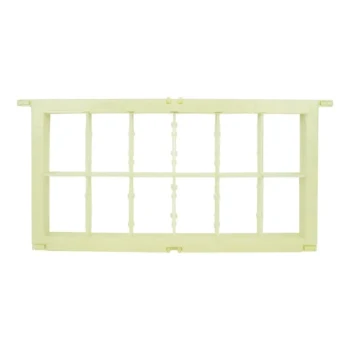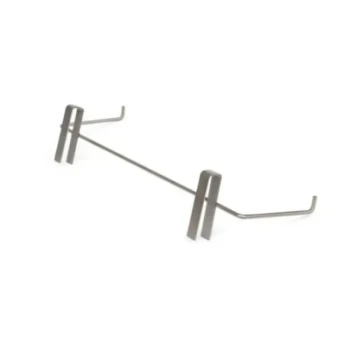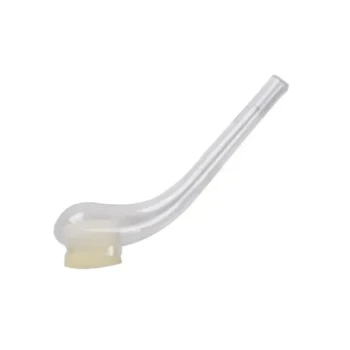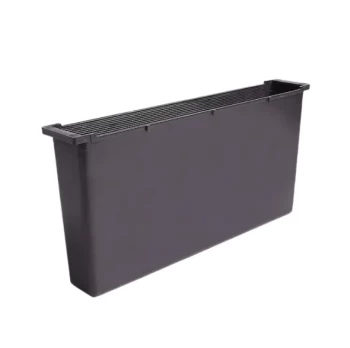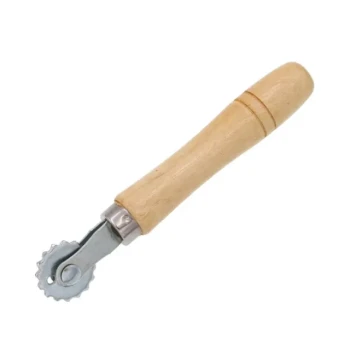In colder regions, you have two primary methods for storing honey frames: leveraging the natural cold by storing them outdoors in a pest-proof location, or freezing the frames for at least 24 hours before storing them indoors in a sealed environment. Both methods are designed to eliminate wax moth infestations, which are the principal threat to your valuable drawn comb.
The core challenge of storing honey frames is not the storage itself, but the complete eradication of pests, particularly wax moth eggs and larvae. Your choice of method depends on your climate's consistency and the storage space you have available.
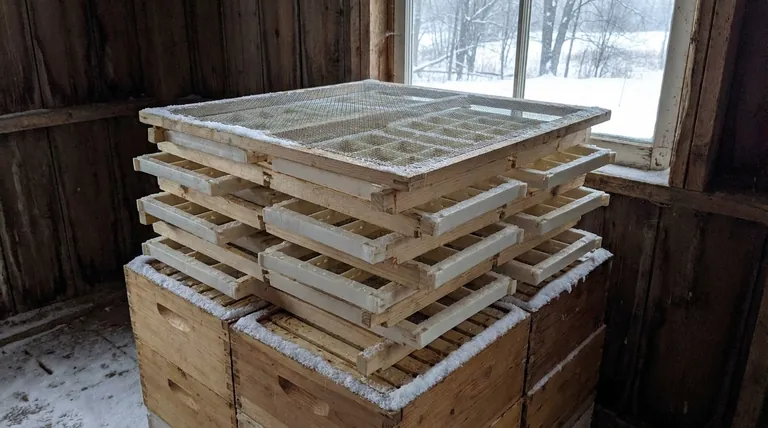
Understanding the Primary Threats
Before choosing a storage method, you must understand what you are fighting against. Your drawn comb is a valuable resource that takes immense energy for your bees to create, and it is highly attractive to destructive pests.
The Wax Moth Lifecycle
Wax moths are the beekeeper's nemesis during storage. They lay their eggs in the dark crevices of the hive and on frames. These eggs hatch into larvae that consume beeswax, pollen, and honey residue, leaving behind a destructive mess of webbing and cocoons that can render a frame useless.
The critical takeaway is that while cold temperatures can slow or kill larvae, the eggs are more resilient. A brief cold snap followed by a warm spell can trigger a devastating infestation in improperly stored frames.
Rodents and Other Pests
Mice and other rodents are attracted to the residual honey and pollen in the comb. They will chew through wax and wooden frames to get to it, causing significant damage. Any outdoor storage solution must be absolutely rodent-proof.
Method 1: Leveraging Natural Cold (Outdoor Storage)
This method uses the sustained freezing temperatures of a cold climate as a natural pest control. It is effective but requires the right conditions.
How It Works
Sustained temperatures well below freezing (ideally below 20°F / -6°C) for several consecutive days will kill wax moth adults and larvae. The constant cold prevents any surviving eggs from hatching and developing.
Key Requirements for Success
For this method to work, you must store your frames in an unheated, well-ventilated, and rodent-proof location. This could be a shed, barn, or porch.
Stack your honey supers crisscross to allow for maximum light and air circulation, as wax moths prefer dark, stagnant environments. Covering the top and bottom of the stack with a screen or queen excluder provides ventilation while keeping rodents out.
Method 2: The Freezing Protocol (Indoor Storage)
This is the most definitive method for ensuring your frames are pest-free. It mechanically breaks the wax moth life cycle before the frames are put into long-term storage.
Why Freezing is the Gold Standard
Freezing kills all stages of the wax moth—adult, larva, and egg. It removes all guesswork and is not dependent on unpredictable weather patterns, making it the most reliable option for protecting your comb.
The 24-48 Hour Rule
Place your frames in a chest freezer for a minimum of 24 hours; 48 hours is even better for full peace of mind. The temperature should be 0°F (-18°C) or colder to ensure a complete kill. You can cycle frames through the freezer in batches if you have limited space.
Post-Freezing Storage
After freezing, the frames are pest-free but not pest-proof. Once they thaw, they are vulnerable to re-infestation. Immediately place the frames inside heavy-duty plastic bags or sealed plastic totes. This creates a physical barrier that prevents new moths from accessing the comb.
Understanding the Trade-offs and Pitfalls
No method is perfect. Your choice involves balancing convenience, resources, and risk.
Risks of Outdoor Storage
The main risk is an unusually warm winter or a mid-season warm spell. If temperatures rise enough for a few weeks, wax moth eggs can hatch and larvae can begin their destructive work. Furthermore, if your storage is not perfectly rodent-proof, you risk losing frames to mice.
Limitations of Freezing
The primary limitation is freezer space. For a beekeeper with many supers, freezing every frame can be a logistical challenge. It requires either a large dedicated chest freezer or a time-consuming process of rotating batches of frames through a smaller one.
A Note on Chemical Treatments
Commercial products like Para-Moth (paradichlorobenzene) or fumigants containing Bacillus thuringiensis (Bt) are also options. However, many beekeepers avoid chemical treatments on honey supers to prevent any risk of contamination. These methods require careful handling and ventilation and should be used as a last resort according to strict manufacturer instructions.
Making the Right Choice for Your Apiary
Select your storage strategy based on your climate, equipment, and risk tolerance.
- If you live in a consistently freezing climate and have a secure outbuilding: Outdoor storage with proper ventilation and rodent-proofing is an efficient and low-cost option.
- If your winter temperatures fluctuate or you lack secure outdoor space: The freezing protocol is your most reliable choice for guaranteeing pest-free frames.
- If you are a large-scale beekeeper with too many frames to freeze: You may need to invest in a dedicated storage building and consider carefully vetted chemical options like Bt.
Ultimately, protecting your drawn comb is a critical investment in the health and productivity of your colonies for the following season.
Summary Table:
| Storage Method | Key Requirement | Primary Advantage | Main Risk |
|---|---|---|---|
| Outdoor Storage | Sustained freezing temps (< 20°F / -6°C) & rodent-proof location | Uses natural cold; low-cost & efficient | Warm spells can trigger wax moth egg hatching |
| Freezing Protocol | Freeze frames for 24-48 hours at 0°F (-18°C), then seal in airtight containers | 100% effective against all wax moth life stages | Requires sufficient freezer space & time for batch processing |
Protect your apiary's most valuable asset—your drawn comb.
As a commercial beekeeper or equipment distributor, you understand that proper frame storage is not just about winterizing; it's about safeguarding your investment for the next season's productivity. HONESTBEE supplies the durable, pest-resistant storage solutions and equipment you need to implement these methods effectively.
Let us help you choose the right gear for your climate and scale. Contact our wholesale experts today for tailored solutions that ensure your frames remain pest-free and ready for spring.
Visual Guide
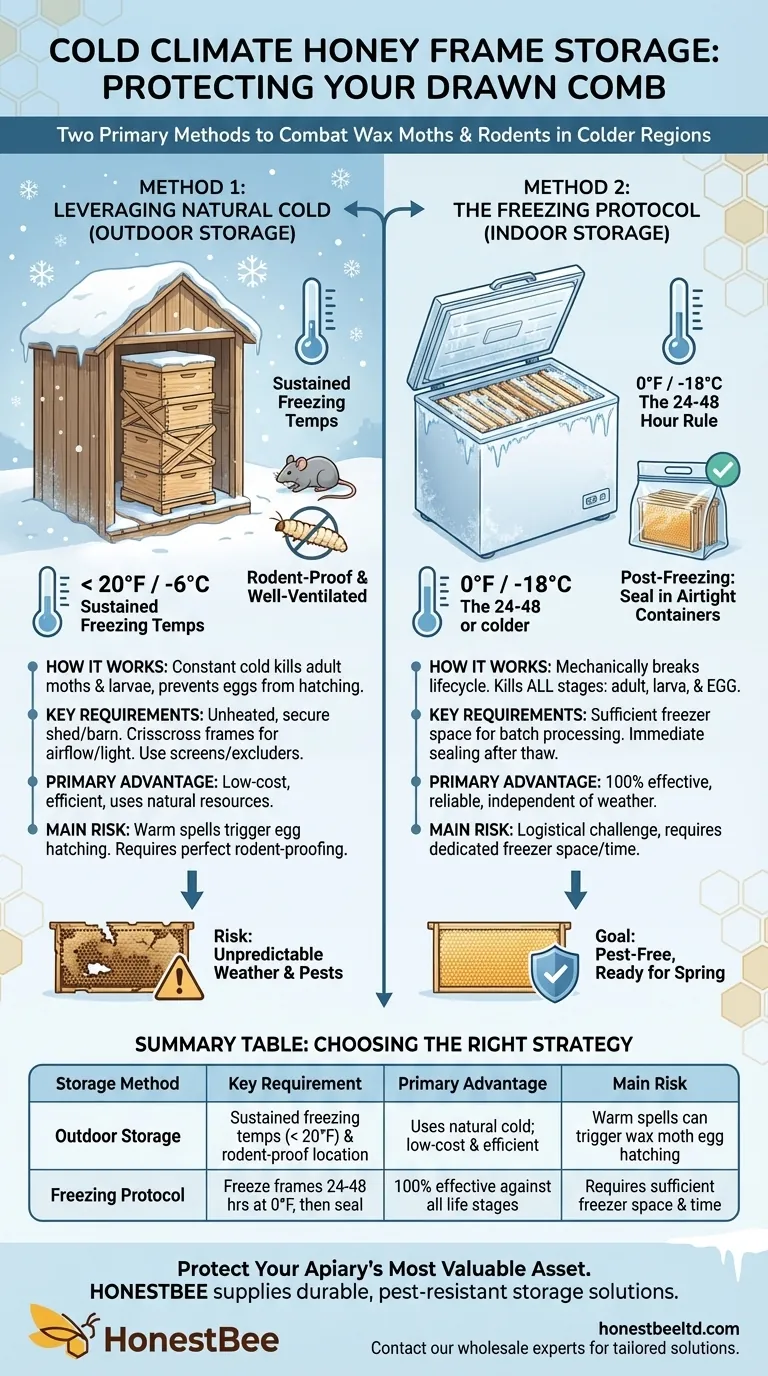
Related Products
- Professional Sectional Comb Honey Frame with 250g Cassette System for Beekeeping
- Heavy-Duty Stainless Steel Clip-On Frame Perch
- 7 x Auto Bee Flow Hive Frames Plastic Beekeeping Hive Box Supplies
- JZBZ Langstroth Queen Rearing Frame for Beekeeping
- Yellow Plastic Bucket Pail Perch for Beekeeping
People Also Ask
- What are the steps to prepare frames for honey extraction? A Beekeeper's Guide to a Stress-Free Harvest
- What maintenance is required for a Flow Hive? Essential Beekeeping Tasks You Still Need to Do
- How do Flow Hives work? Revolutionizing Honey Harvesting with Gentle Extraction
- What is the purpose of a honey dryer? Maximize Your Honey Yield and Quality
- What precautions should be taken when storing honey frames? Protect Your Valuable Comb from Pests
